Reviewers' Choice: Favorite Books of 2017, Round Two

Every holiday season, we ask a few of our most prolific, skilled reviewers to reminisce over the scores of books that passed through their hands in the previous twelve months. Do any really stick out? Why? What makes them extraordinary?
Our goal, of course, is to create a “best of 2017” list. So, just as we did last week, here’s another batch of can’t miss titles from a diverse group of indie publishers. If you’re looking for some last minute Christmas gift ideas, you have just enough time to track these beauties down and get ’em wrapped.
Winifred Conkling brought so much life to Susan B. Anthony and Elizabeth Cady Stanton’s friendship and to the other key players in the women’s suffrage movement. While it’s listed in a young adult category, it’s more on the mature side in tone and historical research and would likely appeal to adults, too. —Meg Nola
Votes for Women!
American Suffragists and the Battle for the Ballot
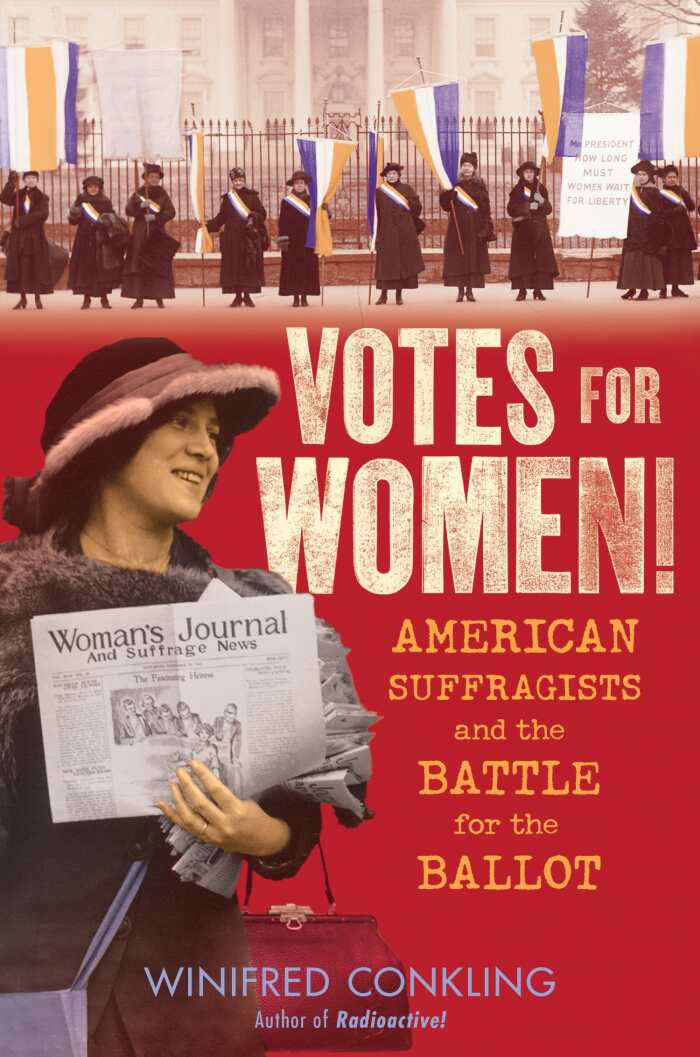
Winifred Conkling
Algonquin
Hardcover $18.95 (240pp)
978-1-61620-734-2
Winifred Conkling’s Votes for Women! details the arduous struggle for women’s suffrage in America with compelling biographical profiles of some of the movement’s key figures.
Beginning with the earlier part of the suffrage movement, Votes for Women! combines strong historical research and spirited narrative, spotlighting the lives of Elizabeth Cady Stanton and Susan B. Anthony, two remarkable women who fortuitously crossed paths and began a decades-long friendship and a crusade for female equality.
Though they had their differences in lifestyle, opinion, and general temperament, Stanton and Anthony worked tirelessly toward the shared goal of women’s suffrage. Sadly, neither would live long enough to legally cast her own vote, but as Stanton suggested, their seeds of “winter wheat” would be reaped by generations to come.
Moving into the early twentieth century, Votes for Women! follows the wave of enthusiasm that brought renewed energy to the movement. Alice Paul, from a New Jersey Quaker family, transformed the lessons of her socially conscious upbringing into action, rallying supporters to march on Washington and demand action from Woodrow Wilson. Members of this later, more diverse suffragette group were arrested, force-fed in prison, sent to dismal workhouses, or cursed at and assaulted by drunken men demanding to know who was “minding the babies.”
Other aspects of the suffrage quest, such as the contributions of African American social justice activists Sojourner Truth and Ida B. Wells, and the tenuous balancing of civil rights with women’s rights, are also well detailed. Through letters, journals, biographies, photographs, and newspaper accounts, the efforts of the known and unknown women who took up the cause of suffrage are vividly storied, concluding how Seneca Falls’s crop of “winter wheat” continues to grow and bring in its collective harvest.
MEG NOLA (December 15, 2017)
A masterful collection of stories, and turns of phrase, that stay with you long after closing the book; equally impressive displays of characterization, plot, setting, mood, and language make this a literary tour de force. —Peter Dabbene
The Museum of Possibilities
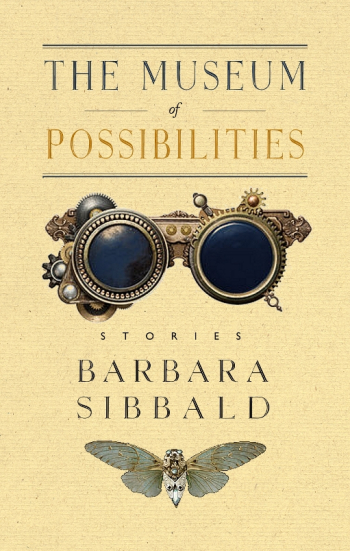
Barbara Sibbald
Porcupine’s Quill
Softcover $19.95 (182pp)
978-0-88984-400-1
Buy: Local Bookstore (Bookshop)
This collection is a brilliant example of the versatility and vast potential of the short story form.
Barbara Sibbald’s probing, sympathetic, and quietly graceful short stories are collected in The Museum of Possibilities.
The Ottawa-based Sibbald has been an editor, a journalist, and the author of novels, and the stories gathered in The Museum of Possibilities are representative of both her writing skills and her experience, spanning more than two decades of her work.
Divided thematically into three parts, the book begins with the title story, in which a man visiting a hoarder gains glimpses of what might have been in his own life. The collection gains steam, as the stories that follow fully embrace Sibbald’s greatest strength—intimately inhabiting her characters.
The complicated friendship, combined with elements of unacknowledged love, depicted in “Places We Cannot Go” is utterly convincing and affecting. Sibbald is also inventive, as demonstrated in the standout “Things We Hold Dear,” which shows the thoughts of a character in a story intercut with those of the reader of that story. The two women are revealed as parallels, as the fictional reader comments on the character:
She believes she’s found solace in others. But now that she understands the narrowness of the contract, can she continue? It is a question I settled for myself long ago, propelled by Phillip, of course, but still… We have to make our peace or be consumed by the quest.
Part two of the book, called “Dispatches from Madawan,” shows off Sibbald’s wit with several sly and often satirical three- or four-page glimpses into the lives of denizens of Madawan, Ontario. But Sibbald always manages a kind of elegant subtlety, and she never sacrifices a deeper point on the altar of humor.
Part three marks another highlight: the five stories that profile a single character, Wanda, beginning at age eight and continuing through her adult life. Here, Sibbald allows a view of family dysfunction through the eyes of a child, a preteen, and later, an adult, in convincing voice each time. The saga culminates in the story “The Normal Blur of Myopia,” in which an eye degeneration forces Wanda to truly see the nature of her own personal life.
Sibbald has a deft and delicate touch in bringing her characters to life—small details regularly reveal larger truths. The Museum of Possibilities stands not just as an excellent introduction to Sibbald’s writing or a handsome and convenient collection of some of her best work in fiction—it’s also a brilliant example of the versatility and vast potential of the short story form.
PETER DABBENE (June 6, 2017)
The plot itself is absorbing and each action only makes the story more spellbinding. Reading it in one go was not difficult; the real difficulty would have been putting it down as the tension rose. —Hannah Hohman
Sleeper

MacKenzie Cadenhead
Sourcebooks
Softcover $10.99 (272pp)
978-1-4926-3614-4
Buy: Local Bookstore (Bookshop)
Sarah has suffered from REM Sleep Behavior Disorder her whole life. The disorder causes her to act out her dreams—a problem that is considerable enough to warrant bedtime restraints and many medical trials. After one frightening incident, a seeming miracle drug offers her possible respite.
At a sleepover, Sarah wakes up with her hands around her friend’s throat. The incident makes her a social pariah, and Sarah finds that she would do almost anything not to have to worry about hurting someone ever again. She accepts a new trial medicine that promises no more movement in her sleep.
At first, the drug seems to work. But then strange things start happening in her dreams. Side effects are fascinating. A boy named Wes is along for the ride, showing up in her sleeping and waking hours.
Sleeper is a roller-coaster read. Wes proves to be a thrill-seeking, near addict of a risk-taker; he makes Sarah feel understood after she’s been tossed from her old group of friends. He, too, knows what it’s like to suffer from sleep disorders, and he offers her empathy that she hasn’t received from anyone else—even her ex-boyfriend, Jamie. Wes’s personality is intriguing and mysterious, even if his moral code is looser than most people’s.
Cadenhead does an amazing job of making Sarah’s decisions completely relatable and understandable. When she wants to use the drug to its full advantage, it’s easy to cheer for her to go full throttle. When she begins to worry about its effects, there’s no hesitation in agreeing she’s right. It can be difficult to get a reader to follow along with a character’s every decision, but Cadenhead pulls it off. The results are thrilling.
Sleeper is entirely enthralling, with twists and layers that race through to the end.
HANNAH HOHMAN (June 29, 2017)
While its style can be seen, superficially, as a response to the success of Serial podcast, Six Stories uses the often conflicting or incomplete accounts of its fictional characters to weave a complex mystery that surprises and satisfies in a way all its own. —Peter Dabbene
Six Stories

Matt Wesolowski
Orenda Books
Softcover $14.95 (280pp)
978-1-910633-62-5
Buy: Local Bookstore (Bookshop)
Wesolowski is especially skilled at utilizing the setting to enhance his naturally suspenseful story.
Inspired by the podcast Serial, Matt Wesolowski weaves a dazzling fictional mystery in his book Six Stories, told in the form of interviews with those involved.
Set twenty years after a teenager’s mysterious death in a remote United Kingdom area known as Scarclaw Fell, Six Stories offers a Rashomon-style variety of points of view, combined with realistic characters, teen angst, tales of the supernatural, and surprising twists.
Some novelists use an unreliable narrator as a plot device; Wesolowski multiplies the effect, as different interpretations of events are offered by people who were present at the time of the incident. Across a distance of twenty years, the effect is further magnified, as shown in an exchange between interviewer and interviewee:
Have you been in contact with any of the others since?
Not at all. I think a few of them added me on Facebook. God, my memory’s so bad.
The book’s verisimilitude in characterization, setting, and diction allows fiction to imitate life—in this case the popular nonfiction Serial podcast. Six Stories is written mostly as a series of transcripts of a fictional podcast, titled Six Stories. Its host is one of the primary voices that guide the mystery’s revelation—but not the only one.
To call Six Stories a fictionalized version of a Serial-type podcast doesn’t do justice to Wesolowski’s gripping writing, inventiveness, or the elements of a classic mystery that appear here in a slightly different format than the norm.
Wesolowski is especially skilled at utilizing the setting to enhance a naturally suspenseful story—he’s written horror novellas set on the Northumberland coast and the forests of Sweden, respectively, and in this case, the forbidding landscape of Scarclaw Fell becomes a character in its own right.
While those who enjoy the Serial podcasts will probably enjoy Six Stories as well, it’s perhaps more notable for those who love classic mysteries. Six Stories offers a new style of mystery, one that encapsulates the twenty-first century, the Internet, and social media, even as its characters struggle to recall—or forget—a time before such things.
PETER DABBENE (April 27, 2017)
Hel reimagined as a YA lead is such a twist and yet works perfectly. Simon does an excellent job creating a character that was strong yet pitiable, interesting but not always likeable, all at once. Coupled with amazing descriptions of a rarely explored mythology, it makes The Monstrous Child one of the best books on the shelves, not just of 2017. —Hannah Hohman
The Monstrous Child
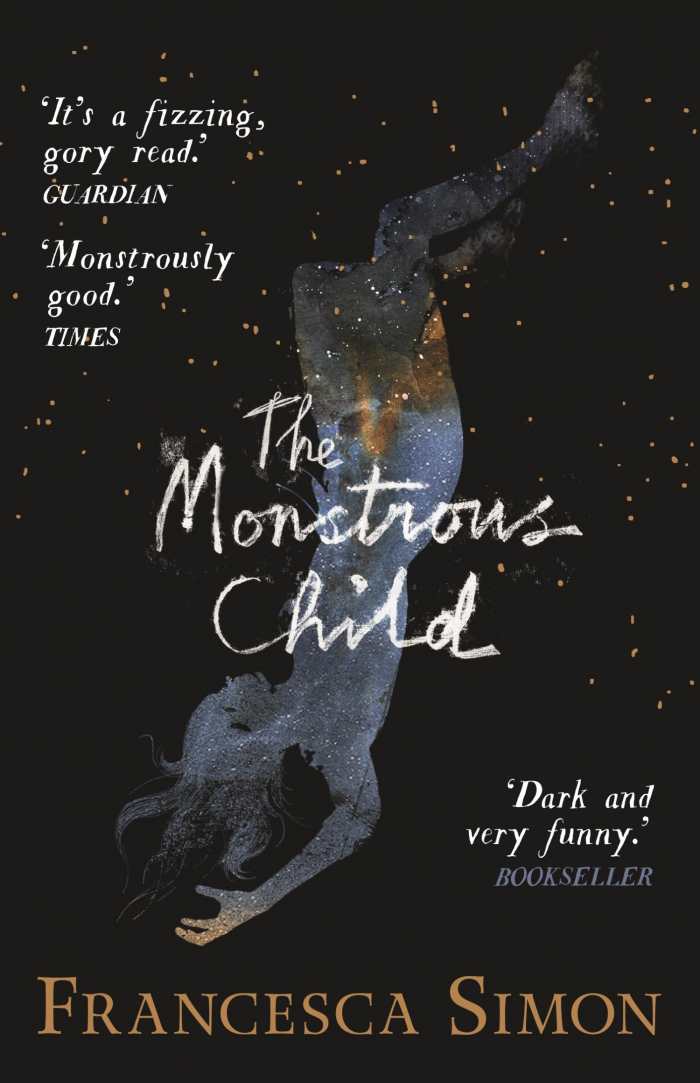
Francesca Simon
Faber & Faber
Softcover $11.95 (304pp)
978-0-571-33027-0
Buy: Local Bookstore (Bookshop)
Hel, Norse goddess of the Underworld, tells her story, on her terms, in The Monstrous Child.
Born in a cave with a snake and a wolf for brothers, Hel is the daughter of a giantess and of Loki, the god of mischief—it’s no wonder that Hel is unusual too. While her torso is normal, her legs are those of a corpse.
Her mother proves to be hateful, and her brothers are terrifying. Her absentee father appears and disappears for much of her life. She has never known affection; Baldr, a god, surprises her with that. But it cannot last. She is already jaded and cynical by the time that she comes to live among other gods, before she is cast down into the Underworld—a place she later names after herself.
Hel’s voice is definite and strong. She’s a sarcastic and bitter lead, and unapologetic. Why should she be, when she was born half dead and sent to live with only the dead for companions? Hel often seems to be a victim of her circumstances—of her parentage, her rotting and painful form, and a lack of love. But she is also derisive of nearly everyone and sometimes seems suited to her awful fate.
Most of the book takes place in the Underworld, where those who have not died in battle go to spend eternity. Not much happens in the land of the dead; Hel keeps it interesting, and her scenes hold attention.
Hel’s story is unique; her toughness carries the story, and her inner monologue is absorbing.
HANNAH HOHMAN (June 29, 2017)
Pedrosa’s art explodes with vitality, and this tale of family and homecomings illuminates those subjects, and their importance to a life well-lived, in endearing fashion. —Peter Dabbene
Portugal
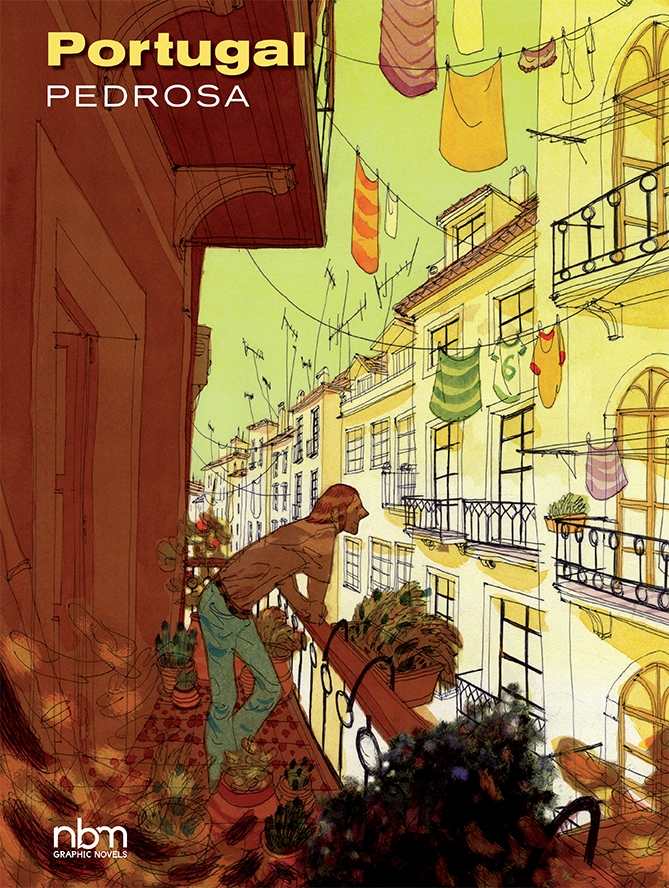
Cyril Pedrosa
NBM Publishing
Hardcover $39.99 (264pp)
978-1-68112-147-5
Buy: Local Bookstore (Bookshop)
Cyril Pedrosa transforms his personal experience of discovering family roots into a semi-autobiographical masterpiece, the award-winning graphic novel Portugal.
The fictionalized protagonist is Simon Muchat, who finds himself uninspired in his career and romantic life. Muchat lives in France, but when he’s invited to a comics convention in Portugal, he takes the opportunity to reconnect with the relatives who stayed in Portugal when Simon’s grandfather moved to France permanently.
Simon learns Portuguese and delves into his family history while adapting to a simpler way of life. The process leads him to a new understanding of his sometimes-distant father Jean, his deceased grandfather Abel, and the decisions that changed the course of their lives.
Portugal is divided into three sections, based on the perspectives of Simon, his father, and his grandfather, but the book’s narrative is seamless, flowing naturally from one point of view to the next.
The art of translating a book from French to English while keeping intact large amounts of Portuguese dialogue is not without its dangers, but it’s done well here, maintaining the relaxed tone of Simon’s Portuguese relatives, as well as the often clipped tone of Simon’s interactions in France.
Pedrosa’s art is outstanding, combining the warmth and vitality of sketchwork with an eye for detail and facial expressions. The book’s palette of colors also helps to draw outsiders into the very personal experience of Portugal—a book that deserves every bit of the attention it has garnered.
PETER DABBENE (December 15, 2017)
The premise of this guide alone is heartwarming and Laura Leigh Abby executes it so well, as though she was a true friend of every reader. Every woman marrying another woman would benefit from this expansive and special book. —Hannah Hohman
2Brides 2Be
A Same-Sex Guide for the Modern Bride
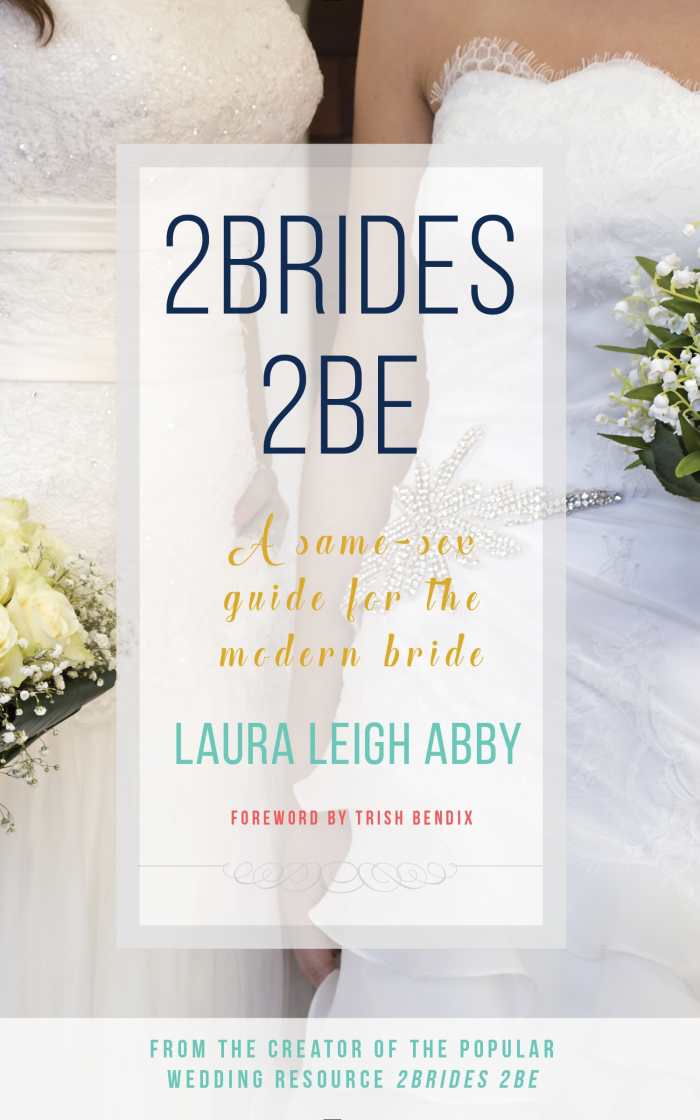
Laura Leigh Abby
Archer
Softcover $15.95 (224pp)
978-1-941729-17-5
Questions are answered and excitement is sparked in this one-of-a-kind guide.
2Brides 2Be is a guidebook specifically for women same-sex couples, covering all of what they will face as they plan a wedding with two brides.
Brides are notoriously particular. And when you have two brides’ dreams to think about, you may need some help.
Laura Leigh Abby planned her own wedding without much to guide her along. She began a blog called 2Brides2Be, and the entries are compiled in this book. It contains her own personal experiences as well as those of others to cover a range of perspectives.
Abby embraces preconceptions about brides and same-sex weddings and discusses their truths and falsities frankly. Her candor is something to appreciate—though her words can be blunt, sincerity shines through.
Accepting that a wedding with two brides contains unique challenges—and joys—this book explores the value of tradition versus nontraditional approaches, guest lists, bachelorette parties, and more. Each new chapter explores an aspect of wedding planning, all very helpfully organized and cohesive. The subjects blend fluidly. Each section is peppered with dos and don’ts, reminders, advice, and personal stories. In the end, Abby reminds, it is a special day and no one can really run it but the brides.
The tone is conversational, friendly, and supportive. The author never shies from the tough subjects, such as that a pair of brides can encounter some contention from others. She offers her condolences, gives advice on how to deal with those who feel that way, and ultimately reminds the brides that it’s their day.
2Brides 2Be: A Same-Sex Guide for the Modern Bride is a one-of-a-kind guide for lesbian couples, and not just on planning the actual event. Advice on the entire wedding experience is covered, answering questions and sparking excitement.
HANNAH HOHMAN (February 27, 2017)
Aside from being an entertaining and evocative statement about the place of music in modern society, this Faustian tale features the best soundtrack to a graphic novel, like, ever. —Peter Dabbene
Instrumental
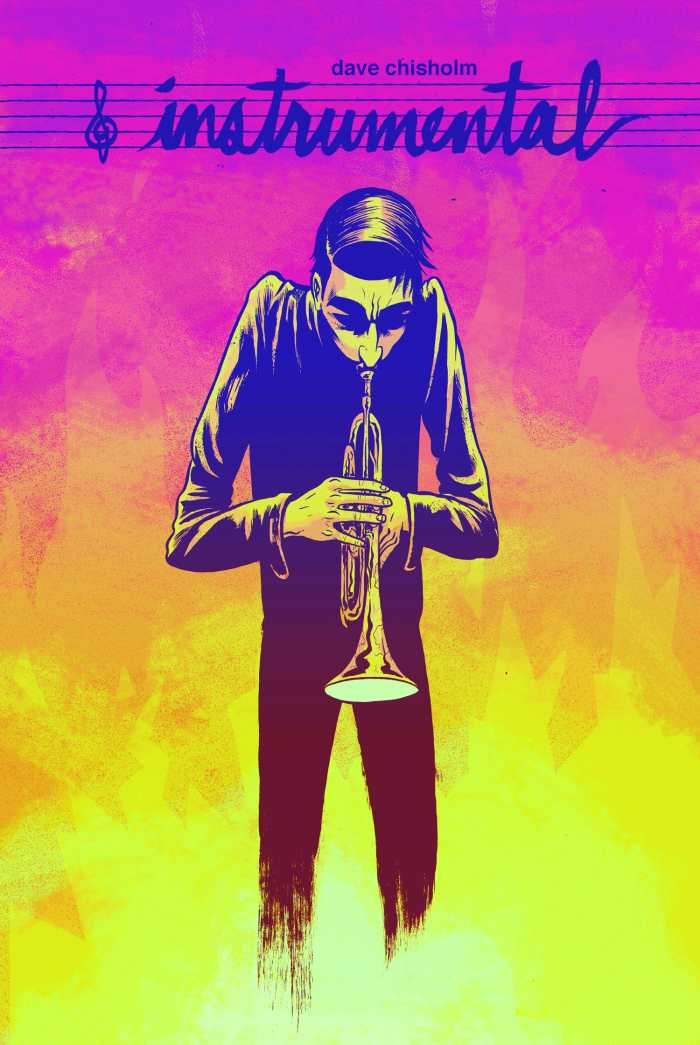
Dave Chisholm
Z2 Comics
Softcover $24.99 (224pp)
978-1-940878-15-7
It’s not often that one sees successful cross-pollination between the worlds of comics and music, but Dave Chisholm accomplishes just that with his graphic novel (and accompanying soundtrack) Instrumental.
Chisholm is an accomplished jazz trumpeter, and he draws on personal experience to create a convincing world for his central character, a talented but frustrated trumpet player named Tom Snyder. Snyder is tired of playing to small audiences, so when a mysterious stranger gives him an old trumpet that captivates listeners and poises Snyder for next-level success, he doesn’t question his good fortune. But others are in pursuit of the trumpet, and Tom’s friends notice a change in him. The trumpet is revealed to have a destructive provenance, and Tom is forced to question what art means to him, and the role and importance of commercial success.
The personalities of Tom and his friends are unique and appealing, from the old-time bassist who played four dates with Ornette Coleman and distrusts music schools and the Internet, to the young drummer who defends her college major in jazz drumming, to the piano player/florist who compares creating a flower arrangement to putting together a perfect four-piece rock band.
It’s appropriate that Instrumental is a multimedia experience, as the questions it raises are universal to any form of art: as Tom’s pianist points out to him, “If all you love is the result or even whatever reward the result gets you—/—it’s just chasing your tail. You’ll never be satisfied.”
The black-and-white artwork in *Instrumental *is dynamic and inventive, perfectly illustrating both the transcendence of music, and Tom’s struggle as he falls under the influence of the trumpet and everything it represents. Instrumental is recommended for any reader, but perhaps most for those who have a love for music. (Note: each copy of the book will have a QR code linking to a free download of the soundtrack.)
PETER DABBENE (May 9, 2017)
Nature writing “gives voice to the things of the earth,” writes Christopher Merrill, and these days, “the things of the earth” need all the help they can get. Merrill has seen both beauty and destruction in his career—he’s been everything from a poet to a war correspondent—and his book, written as he neared his sixties, is both tender and cuttingly honest as he shares what he knows of “the language of trees” with a world that, hopefully, is not yet deaf to its import.
I take comfort in knowing that there are people out there who, like Merrill, still care and who have the audacity to plant trees knowing they will not live to see their flowering. —Kristine Morris
Self-Portrait with Dogwood
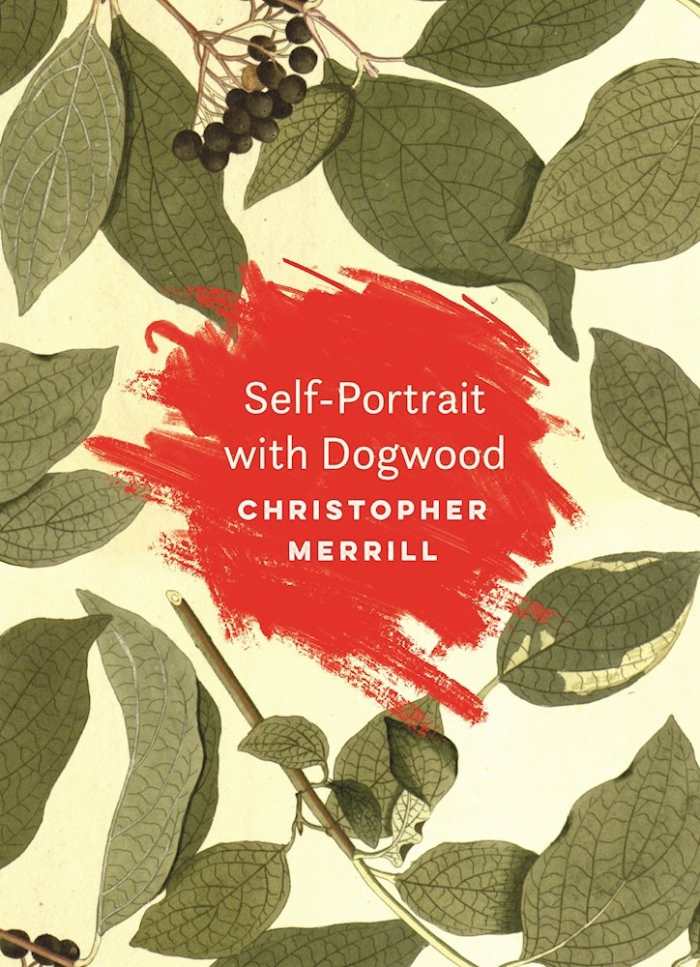
Christopher Merrill
Trinity University Press
Softcover $15.95 (264pp)
978-1-59534-809-8
Buy: Local Bookstore (Bookshop)
An intertwining of personal, natural, and political history reveals an eager, sensitive mind.
That a tree could be called “central to the march of civilization” came as no surprise to poet and essayist Christopher Merrill who, as a nine-year-old boy recovering from eye surgery, began to learn “the language of trees” while perched in the branches of a dogwood. His ode to this small, flowering nesting tree with a lifespan similar in length to that of a human not only praises it for its usefulness to man and beast, but for the manner in which the tree always seemed to appear to him at the turning points of his life.
For Merrill, who writes that he “served his literary apprenticeship under the sign of the dogwood,” physical work in the garden and landscape has always provided “a vital counterpoint” to his work as a poet, essayist, war correspondent, editor, and translator, and as director of the International Writing Program at the University of Iowa. His memoir, written as he was nearing his sixtieth year, traces the delicate, interactive web of creation that links humans and nature, illuminating how vital each small being, each plant, each person is to the whole. In travels across the globe, even to war zones where scenes of the depth of man’s depravity were seared into his soul, Merrill also found the wonder of humanity’s ability to love, to heal, and to connect; the dogwood serves both as a metaphor for this and, in its decline, as an “an augur of our fate” should we fail to honor these connections.
Nature writing “gives voice to the things of the earth,” writes Merrill, and “helps us understand the place of humankind in the great chain of being.” His intertwining of personal, natural, and political history reveals an eager, sensitive mind that can find the threads of wisdom even written in the rough bark of a dogwood tree.
Planting any tree is an expression of faith in a future we might not live to see. Christopher Merrill has declared this faith in surrounding his home with beautiful flowering dogwood trees; in Self-Portrait with Dogwood, he plants them also in our hearts.
KRISTINE MORRIS (February 6, 2017)
Simple, portable, and transformational, kindness makes a wonderful spiritual practice. And it offers something other practices may not—the chance to see the effects it has on others and in our own hearts right here, right now. Imagine what might happen if we all decided to undertake kindness as our practice, on and off the mat or cushion. What might our families, communities, and nation look like? What would it feel like to live in such a world? And how might it feel to live inside our own skin if we practiced being kind to ourselves? Let’s find out! This book can show the way. —Kristine Morris
Mindful Emotion
A Short Course in Kindness
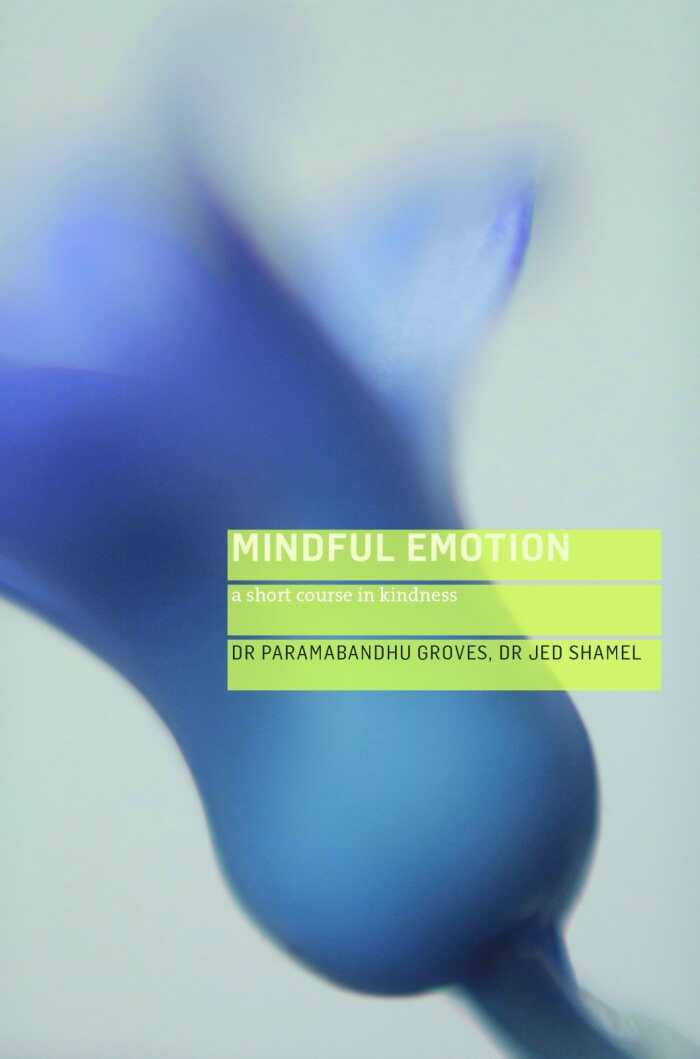
Paramabandhu Groves
Jed Shamel
Windhorse Publications
Softcover $18.95 (264pp)
978-1-909314-70-2
Buy: Local Bookstore (Bookshop)
Those who feel called to make a difference in the world will find the practice of kindness to be a powerful first step.
To respond with kindness in all situations can seem like an unachievable goal, but, in Mindful Emotion: A Short Course in Kindness, Dr. Paramabandhu Groves and Dr. Jed Shamel have brought science, ancient wisdom, and psychological insight together in a practical and wise guide that illuminates a clear path to making kindness a bigger part of life, and something that can be relied upon when things get tough.
Rooted in the Buddhist tradition and inspired by contemporary compassion and mindfulness approaches, Mindful Emotion is the workbook for their course, “Kindness Behaviour Training,” but it stands alone as an accessible, practical, and inspiring guide that demystifies the process of becoming kinder and more compassionate with ourselves, those around us, and even those we may not happen to like.
Using the familiar analogy of the garden, the book shows how simple kindness can have far-reaching, powerful, and often unseen consequences, and how, as a practice, it has the advantage of being something that we can start right now, wherever we are.
Key to developing and radiating kindness is meditation, both formal and informal. “Meditation and action mutually reinforce each other,” write the authors. “As we practice, we see more and more subtle and skillful ways of acting with kindness. We learn to combat the unhelpful ingrained habits of our heart and to transform them into ways of being that benefit both us and others and harvest rich rewards.”
With guided meditations both in the text and in the accompanying audio, with practical exercises and lots of encouragement to take a patient, compassionate, and gently questioning attitude to the self, Mindful Emotion is a real gem.
Those who are looking to deepen their meditation practice and bring its fruits out into the world will find the practice of kindness uncomplicated, portable, and transformational. Those who feel called to make a difference in the world will find the practice of kindness to be a powerful first step—it may even be the only one that’s really needed.
KRISTINE MORRIS (May 27, 2017)
Naivo’s Beyond the Rice Fields manages to be both beautifully lyrical and intensely harrowing as it chronicles the sweep of history in 19th century Madagascar, with memorable characters, a star-crossed romance, and vivid, often brutal cultural details. —Meg Nola
Beyond the Rice Fields
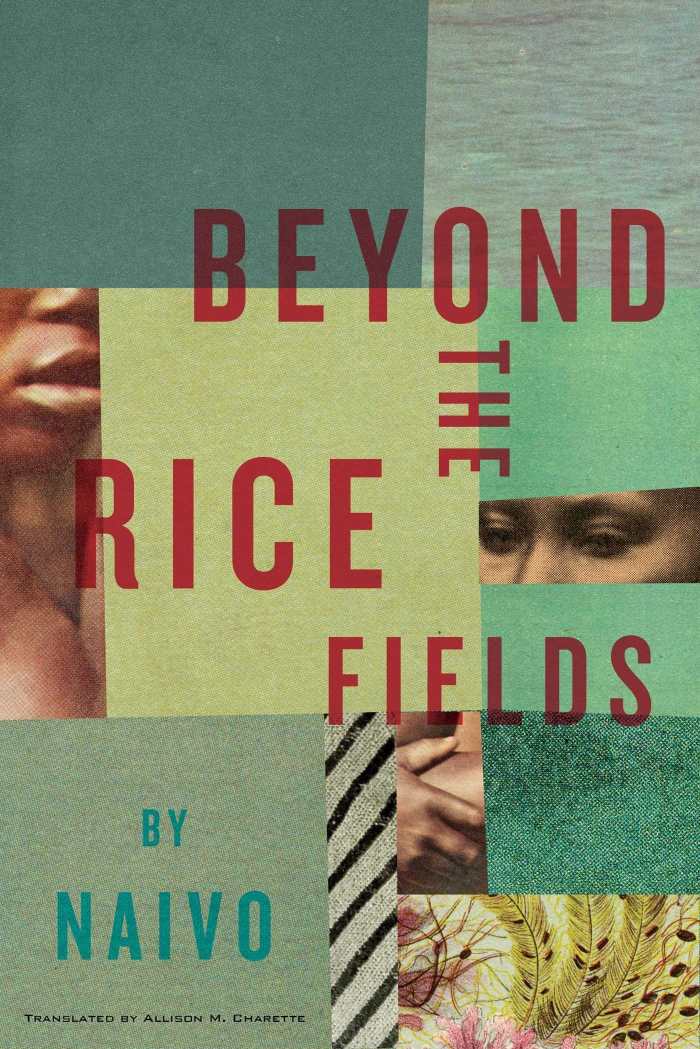
Naivo
Allison M. Charette, translator
Restless Books
Softcover $19.99 (400pp)
978-1-63206-131-7
Buy: Local Bookstore (Bookshop)
Beyond the Rice Fields demonstrates with omniscient sadness mankind’s ability to commit horrific acts.
Naivo’s Beyond the Rice Fields follows the tumultuous history of nineteenth-century Madagascar and, more closely, the fated romance between a young slave named Tsito and his master’s daughter, Fara. With quiet surety, the novel pairs an elegantly poetic narrative with an intensifying brutality of events as Madagascar finds itself beset by internal strife, French industrialism, and the zealous efforts of Christian missionaries.
For Tsito, the effects of violence come early in life, following an attack by a warring tribe that destroys his forest village like a plague of “evil red crickets.” The village men are murdered and the women and children are sold into slavery.
At nine, Tsito is purchased by a traveling trader and taken to his new home in Sahasoa. Fortunately, the trader is a decent man, and Sahasoa is a lush, rural area. Tsito is treated kindly and grows up with the trader’s daughter, Fara. He is always aware, however, that he is a slave, particularly when Fara reminds him of that fact.
Though the novel covers a broad swath of topics, the alternating perspectives of Tsito and Fara anchor the story through decades of change. Tsito’s intelligence and ability to learn new skills serve him well, even amid turmoil, and he is ultimately able to earn back his freedom. His love for the beautifully headstrong Fara is enduring; their relationship evolves from class consciousness and uncertainty to true intimacy and appreciation.
Other characters are also vividly memorable, particularly Bebe, Fara’s sage and caring grandmother, the fiery British missionary Blake, and Ibandro, another slave known for his great strength and compassion.
The imperious cruelty of the country’s native Sovereign Queen and the pitting of Malagasy against each other are equally tragic and appalling. “Subversives” are subjected to ceremonial poisoning rituals or hurled off jagged cliffs.
Rich with historical and cultural detail, Beyond the Rice Fields demonstrates with omniscient sadness mankind’s ability to commit horrific acts in the name of tradition, or for whoever holds power at the moment.
MEG NOLA (September 27, 2017)
Sofia Khvoshchinskaya’s City Folk and Country Folk is an utterly enjoyable, wry and witty glimpse of Russian society following the national liberation of the serfs, featuring uppity intellectuals, pompous and pious snobs, and some unusually forthright female characters. Originally published in the 1860s, the admirable translation by Nora Seligman Favorov includes historical footnotes to broaden both text and context.
City Folk and Country Folk
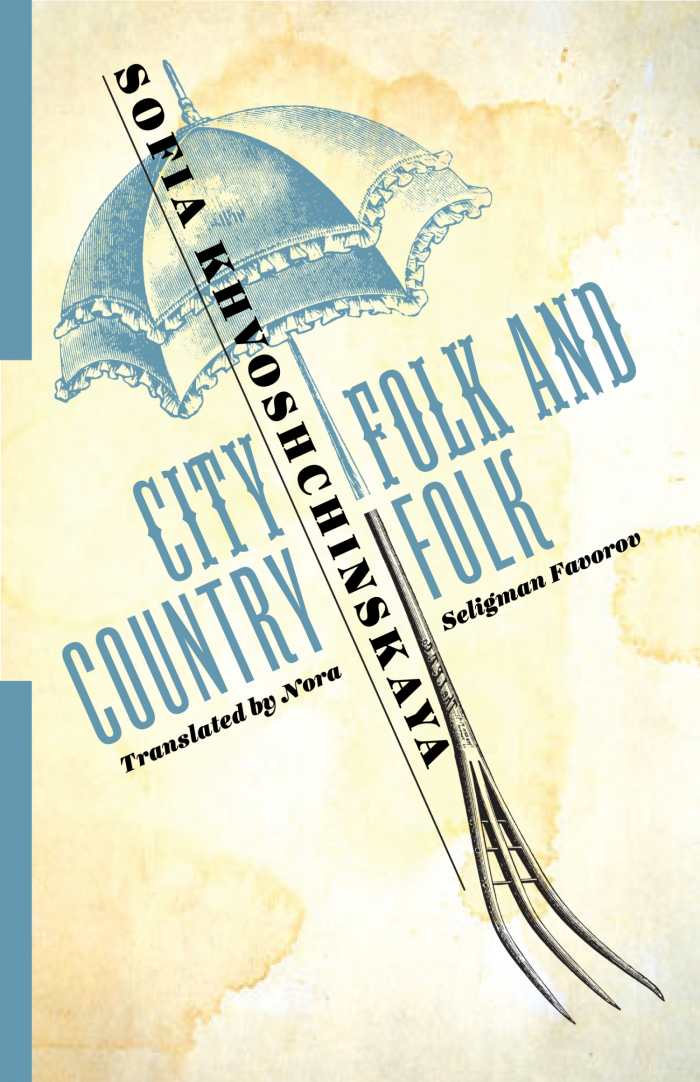
Sofia Khvoshchinskaya
Nora Favorov, translator
Columbia University Press
Softcover $14.95 (192pp)
978-0-231-18303-1
Buy: Local Bookstore (Bookshop)
Quietly masterful, the novel contains rich details of nineteenth-century Russian life.
Sofia Khvoshchinskaya’s City Folk and Country Folk is a slyly captivating, contemporaneous novel of mid-nineteenth-century Russia. Khvoshchinskaya initially authored the work under a male pseudonym, and this translation by Nora Seligman Favorov marks the book’s first appearance in English.
Set in the not always pastoral village of Snetki, the story begins the year after Tsar Alexander II liberated the nation’s peasant serfs. When Erast Sergeyovich Ovcharov arrives in Snetki in his grand Viennese carriage, he has the intention of surveying his familial estate and perhaps spending the summer in the country to benefit his frail health.
Ovcharov is an intellectual aesthete otherwise used to living in Moscow or traveling through Europe. Finding his manor uninhabitable, he decides to rent a small house on the property of his Snetki neighbor, Nastasya Ivanovna Chulkova.
Nastasya is a capable and good-hearted widow who manages her own estate, livestock, and orchards with skill. Her seventeen-year-old daughter Olenka is a bit more difficult to manage, but Olenka’s forthright nature and confidence are endearing to her mother, who would prefer that her daughter be happily married than well married.
Though the novel’s tone is generally witty and subtly sarcastic, a sociopolitical grounding lends weight to the plot without becoming intrusive. The fussy, pedantic Ovcharov is more curiously humorous than unlikable, while Nastasya and Olenka represent strong, principled women who try to live on their own terms rather than being manipulative social climbers.
Khvoshchinskaya’s characters are finely developed, but it is Ovcharov who dominates the narrative and who is deliciously and mockingly portrayed. Living in a simple country manner for Ovcharov involves bringing along tapestries, rugs, candlesticks, curtains, toiletries, and a summer wardrobe. He claims to prefer the submissive and deferential women of previous decades, yet he isn’t above pursuing youthfully attractive Olenka.
Another sophisticate, Katerina Petrovna, flaunts her noble status while otherwise putting on false airs, weaving webs of false intentions, and regularly applying false hair dye to cover up the gray.
In a quietly masterful way, City Folk and Country Folk combines wit, intelligence, and a keen knowledge of human nature with rich details of nineteenth-century Russian culture and rural life.
MEG NOLA (July 27, 2017)
As original, informative, attractive, and entertaining as any book you’ll see in a month of Sundays. Projects like this define the independent publishing world. Simply spectacular.
Queer
A Graphic History
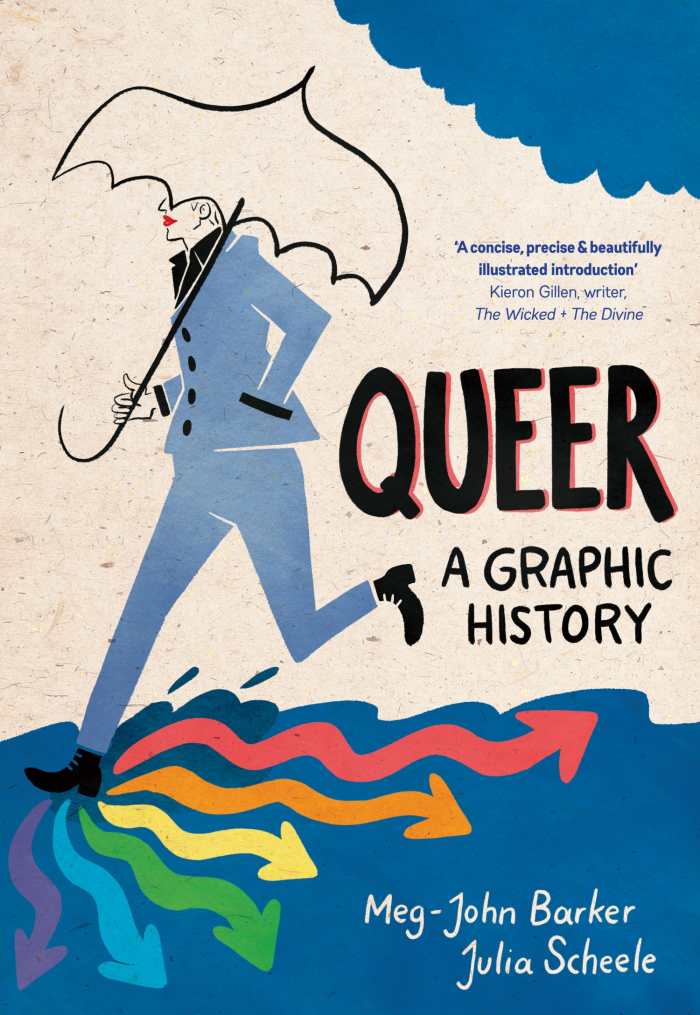
Meg-John Barker
Julia Scheele, illustrator
Icon Books
Softcover $17.95 (176pp)
978-1-78578-071-4
Buy: Local Bookstore (Bookshop)
You are hereby advised not to imagine or assume anything about this book based on its title, such is its unexpected, extraordinary wit and erudition. *Queer’*s overarching goal is to dispassionately explore how contemporary views of sex, sexuality, and gender in Western culture developed over the years, and what influence was played by the queer movement in reaching this status quo. Leading writers and scholars of queer theory earn profiles herein, and their ideas are explained without wince-causing academic speak. The graphic-novel format proves exceptional at exploring identity politics, gender, biology, privilege, exclusion, and sexology through a queer lens. Aha moments come one right after another. One small step for queer theory, this project will leap the layman far down the path of tolerance and understanding.
MATT SUTHERLAND (November 28, 2016)
Matt Sutherland
